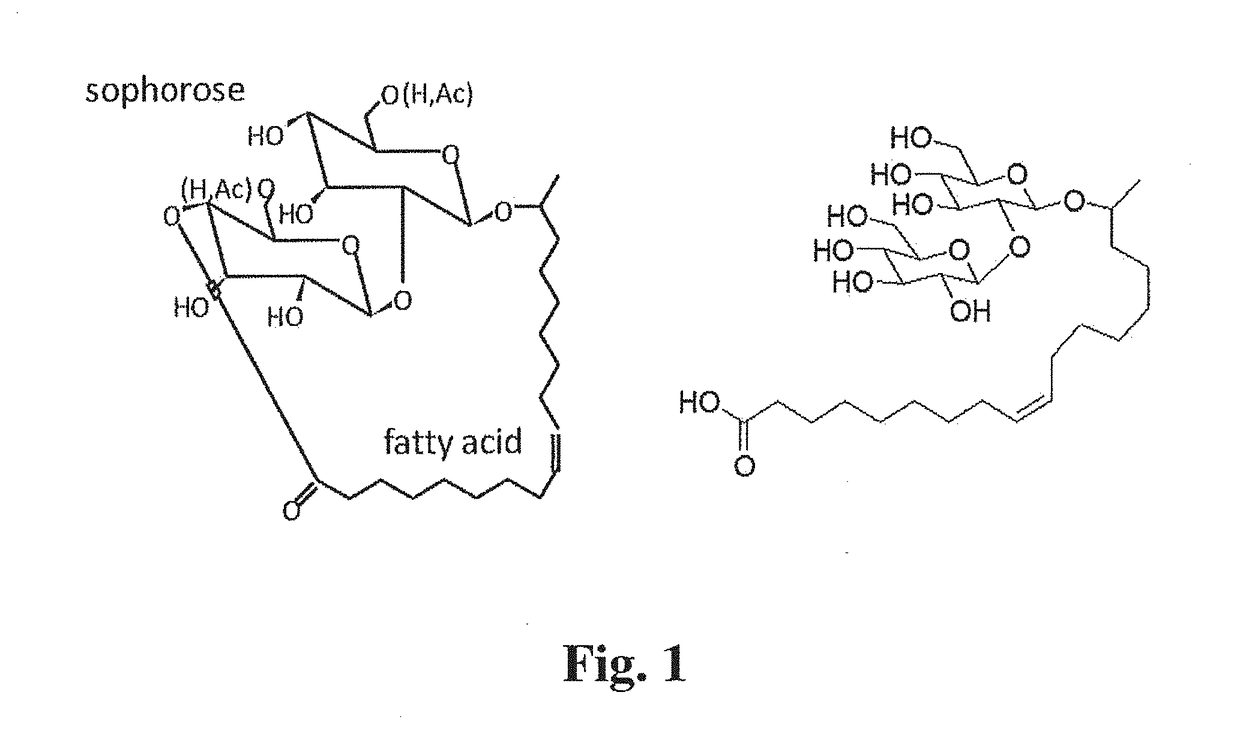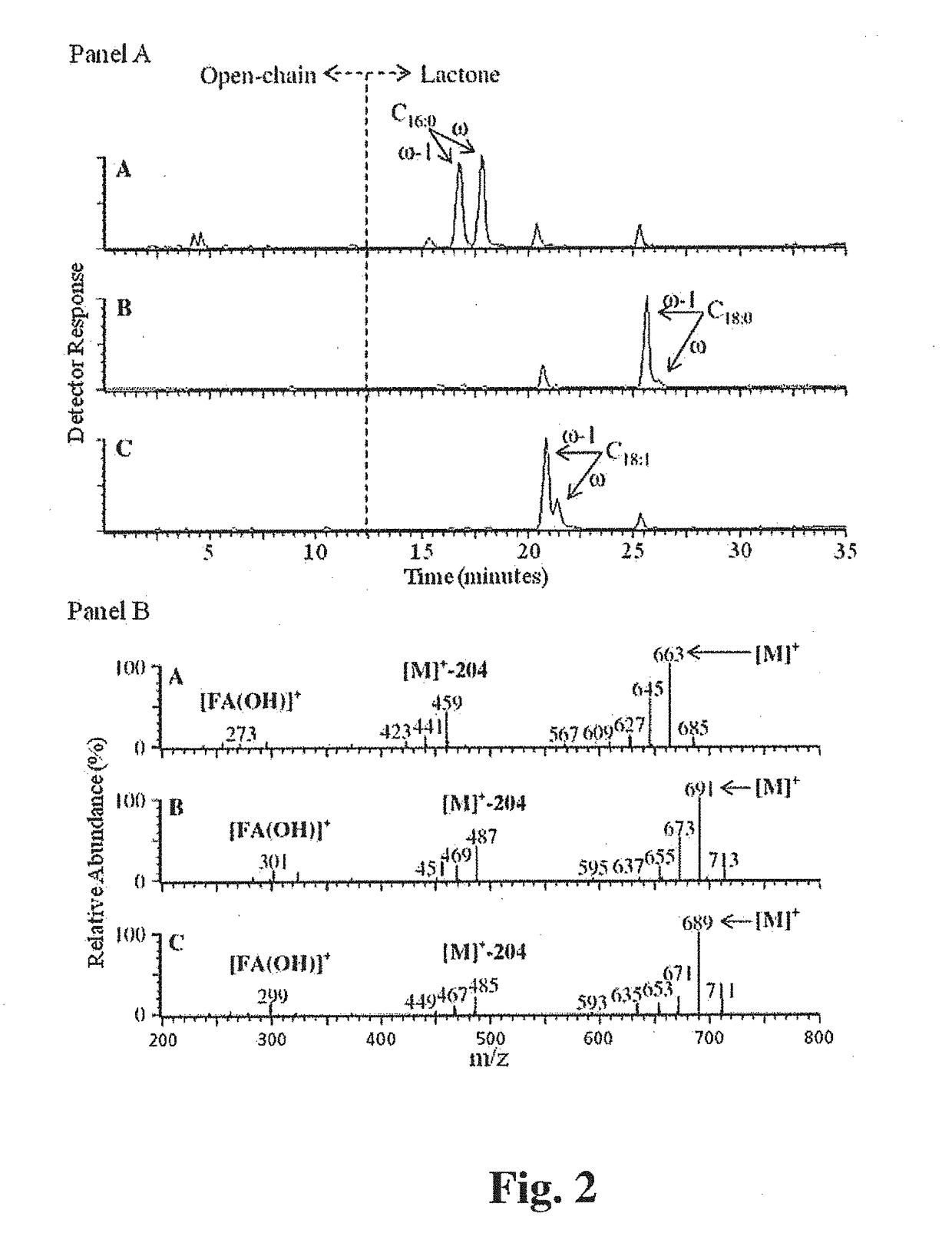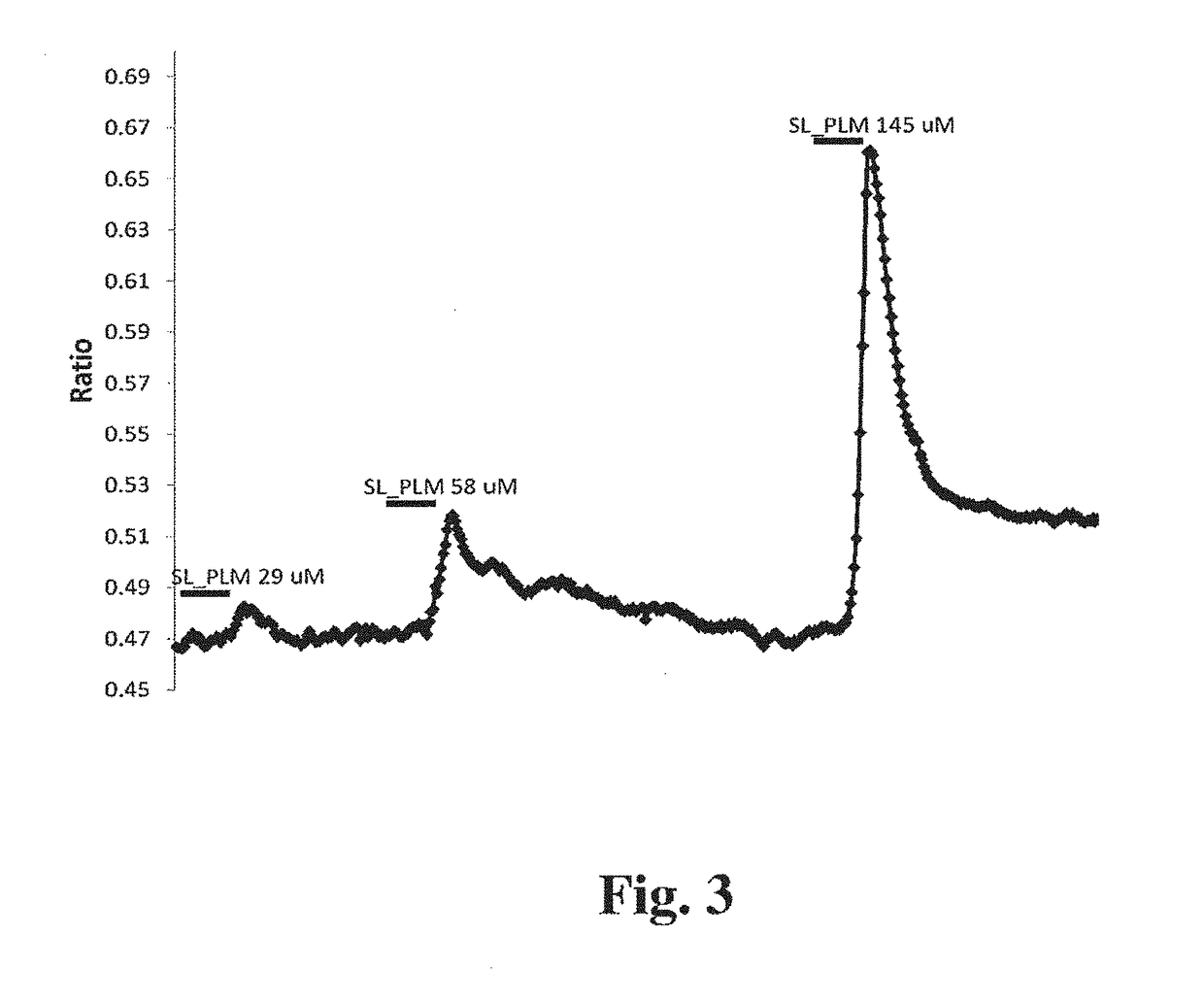Compositions Containing a Bitter Tastant and at Least One Sophorolipid, and Methods of Reducing Bitter Taste Attributed to a Bitter Tastant in an Edible Composition
a technology of bitter tastant and sophorolipid, which is applied in the field of compositions containing bitter tastant and at least one sophorolipid, can solve the problems of poor reputation of artificial sweeteners, the inability to simply replace sugar with intense sweeteners, and the inability to reduce the amount of sugar in an edible composition, so as to reduce the bitter taste of an edible composition, reduce the amount of sugar, modulate or eliminate the effect of bitter taste of a food
- Summary
- Abstract
- Description
- Claims
- Application Information
AI Technical Summary
Benefits of technology
Problems solved by technology
Method used
Image
Examples
examples
[0200]Chemicals, biochemicals, and biologicals: Candida bombicola ATCC 22214 was purchased from the American Type Culture Collection (Manassas, Va.) and stored at −80° C. in Luria-Bertani (LB) broth (1% tryptone, 0.5% NaCl, 0.5% yeast extract) supplemented with 15% (v / v) glycerol as a cryopreservative. Glucose, palmitic acid, oleic acid, stearic acid, and urea were all purchased from Sigma Chemical Company (St. Louis, Mo.). Bacto-tryptone and Bacto Yeast Extract (components of LB broth and Candida Growth Media (CGM)) were purchased from Becton Dickinson (Sparks, Md.). Ethyl acetate and hexane (both HPLC grade) were purchased from Burdick & Jackson (Muskegon, Mich.).
[0201]Production and Characterization of C18 / C16-Sophorolipids. Fermentation: Sophorolipids were produced at the 10-L bench-top scale from C. bombicola ATCC 22214 grown on glucose and either palmitic acid, oleic acid, or stearic acid. The basal CGM (10% glucose, 1% yeast extract, 0.1% urea) was prepared, sterilized by aut...
PUM
| Property | Measurement | Unit |
|---|---|---|
| temperature | aaaaa | aaaaa |
| flow rate | aaaaa | aaaaa |
| voltage | aaaaa | aaaaa |
Abstract
Description
Claims
Application Information
 Login to View More
Login to View More - R&D
- Intellectual Property
- Life Sciences
- Materials
- Tech Scout
- Unparalleled Data Quality
- Higher Quality Content
- 60% Fewer Hallucinations
Browse by: Latest US Patents, China's latest patents, Technical Efficacy Thesaurus, Application Domain, Technology Topic, Popular Technical Reports.
© 2025 PatSnap. All rights reserved.Legal|Privacy policy|Modern Slavery Act Transparency Statement|Sitemap|About US| Contact US: help@patsnap.com



